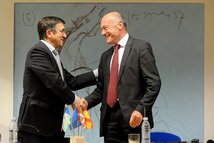Nouvelle Aquitaine-Euskadi-Navarre Euroregion
Countries: Spain , FranceRegions concerned: Nouvelle Aquitaine (France); Euskadi, Navarre (Spain)
The Euroregion is the result of an approach outlined in the early 1990s, a cross-border cooperation structure bringing together the Aquitaine region (France) and the Autonomous Community of the Basque Country (Spain). Its goal is to deepen the cooperation relationship between the two regions and to carry out joint projects on the French-Spanish territory.
In March 2017, Navarre joined the Euroregion by signing a partnership agreement. The enlarged territory has a population of almost 9 million inhabitants and covers an area of about 100,000 km². Unemployment rates differ from one region to another: 12,6% in Euskadi, 12,5% in Navarre and 9,5% in Aquitaine (Empleo figures, 2017).
Initially an informal collaboration, the Euroregion acquired a legal personality in 2004 before taking the form of a European Grouping of Territorial Cooperation (EGTC) in 2011. This status allows it to benefit from a stable legal framework and financial autonomy.
Four main areas of action have been identified in the EGCT’s Strategic Action Plan 2014-2020 (FR) :
- Euroregional identity
- Knowledge, innovation and business competitiveness
- Sustainable territory
- Transparent governance
The definition of these priorities has enabled the EGTC to support numerous projects, notably with the goal of improving services in the Basque Eurocity.
As mentioned by Alain Rousset, president of the Aquitaine region: “it’s the right scale to be more competitive in terms of economic, social and cultural development. The EGTC contributes to building Europe 'from the bottom up', bringing together stakeholders and territories".
The structure is based in Hendaye (France) and its assembly is made up of 18 members, nominated equally between the three regions.
Photograph Copyright: Alban Gilbert


